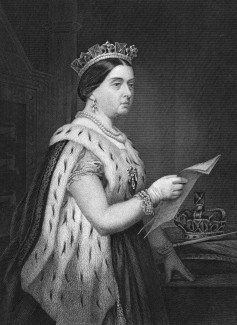
Johns Hopkins UniversityEst. 1876
America’s First Research University
In the Body of a Victorian - with Kathryn Hughes

A few years ago it suddenly hit me that, as an historian of the nineteenth century, I hadn’t been doing a very good job. Or rather, I had done only half a job. Because while I had been diligent in finding out everything there was to know about the intellectual, professional and emotional lives of various eminent Victorians, I didn’t have a clue about what it felt like to live in their bodies. Was George Eliot secretly pleased that she managed to stay slender right through her fifties? What steps did Prime Minister William Gladstone take to disguise the fact that the forefinger of his left hand was missing? And how did the poet Elizabeth Barret Browning deal with the experience of being mixed race (her family were Jamaican plantation owners) in a smart residential area of London that was over-whelmingly white?
These are the kinds of the puzzles that I set out to unravel in my new book Victorians Undone. At first my plan was to write about the everyday bodily sensations experienced by unstarry Victorians – toothache, constipation, a graceful neck or slender foot. Almost immediately, though, I hit the buffers. For it turns out that even the most conscientious Victorian diarist didn’t usually bother to mention her bunions or her freckles. The kinds of evidence I was after – oozes, itches, a glance of admiration or a blush of shame – just weren’t there in the letters, diaries, photographs and memoirs left behind by busy but essentially anonymous men and women of the nineteenth century.
The only thing to do was to turn to famous, brand-name Victorians whose dense, rich archives had been saved for posterity, right down to their laundry lists. For instance, in order to answer the question of what it felt like to take a long walk in shoes that were too big for you, I had to consult the young Queen Victoria’s journal. Here she mentions how uncomfortable it is to have stones sneaking into your gaping shoes, and uses it as an excuse for not taking the long walks she so desperately needs to keep her weight down. Or what about the experience of a man with a weak chin, delighted to discover that bulky beards have suddenly become deeply fashionable? I found the answer to that one amongst the letters and photographs in Charles Dickens’ archive.

By tracking five carefully-selected body parts through the archive I have tried to produce a richer alternative to the usual rather bland biographical narratives. The fact that George Eliot’s right hand was bigger than her left as a result of working in the diary on her father’s farm led me to the discovery that her heirs had been desperate to cover up the fact that their illustrious literary aunt had once done menial work. Darwin’s huge bushy beard turns out not only to be a convenient disguise for the scientist’s lifelong eczema but also a key component in his ground-breaking theorizing on sexual selection. What, he wanted to know, was the beard for exactly? To make a man’s jaw look bigger in relation to those of male competitors? Or to attract the ladies? Intriguingly, the evidence I uncovered from the women in Darwin’s circle suggests that, actually, a high proportion of them couldn’t stand hairy chins.
Then there was the case of Fanny Cornforth, the secret mistress of the Pre-Raphaelite painter D G Rossetti. Fanny’s beautiful lips are the focus of Rossetti’s most famous painting ‘The Kissed Mouth’, but I was also intrigued to find out how she used them in everyday life. Unlike Rossetti’s better-known mistresses, Lizzie Siddal and Jane Morris, Fanny never bothered to tone down her strong working-class accent. Nor did she restrict her intake of food as Jane and Lizzie did in order to squeeze into the medieval ‘aesthetic’ dress that the Pre-Raphaelite Brotherhood liked their women to wear. Instead she was, rather magnificently, her full-bodied self.
Finally, I found myself in two very different kinds of courts. In the early reign of Queen Victoria, an unpopular lady in waiting called Lady Flora Hastings whose stomach was suspiciously large was accused of being unmarried but pregnant. Victoria ordered Flora to submit to an horrendous medical examination which exonerated the lady in waiting of immorality but failed to spot that she was suffering from a fatal liver disease. And then there is little Fanny Adams, an 8 year old working class girl from Hampshire who was beheaded and eviscerated by a 29 year old legal clerk called Frederick Baker who hung for his horrible crime in 1867. A couple of years’ later some British sailors, disgusted by the rotting meat in their rations, came up with a novel explanation. Bits of Fanny Adams that had never been recovered from the murder scene must have somehow found their way into the Navy’s victualling yard. Here, then, is the origins of the phrase ‘Sweet Fanny Adams’ or ‘Sweet FA’ to mean something worthless, of absolutely no value at all.
Kathryn Hughes is the professor of life writing at the University of East Anglia and a literary critic for The Guardian. She is the author of The Short Life and Long Times of Mrs Beeton and George Eliot: The Last Victorian. Most recently, she published Victorians Undone: Tales of the Flesh in the Age of Decorum


